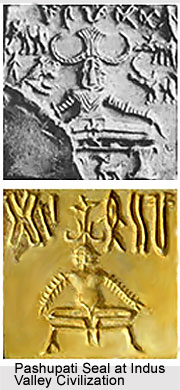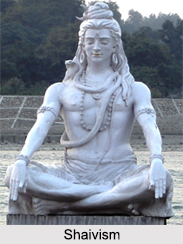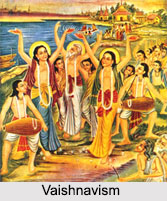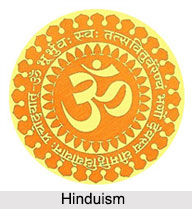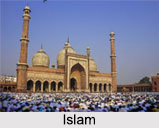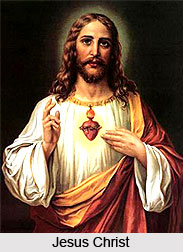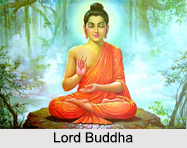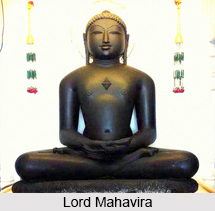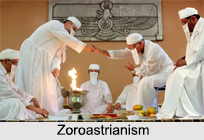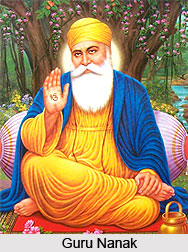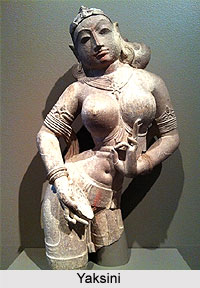 Deities of Jainism are revered as supreme beings. These deities are idols of Jins, Tirthankars. However, with time the Jains also started worshipping many other deities like the Yakshas and Yaksinis, in Jain temples.
Deities of Jainism are revered as supreme beings. These deities are idols of Jins, Tirthankars. However, with time the Jains also started worshipping many other deities like the Yakshas and Yaksinis, in Jain temples.
The Yakshas and Yaksinis are same as Jin, Arihant, or Tirthankaras who have been able to vanquish the inner passions. These deities are on the other hand full of passions and desires who wander through the cycles of births and death. They are also called shashandevtas, gaurdian deities. These deities are heavenly beings of Vyantar group who possess supernatural powers. They have the capability of changing their form and size.
According to Jains these Yakshas and Yaksinis were appointed by Lord Indra to look after the well beings of Tirthankaras. Thus, these deities are always seen around Jins.
All Yaksa are benevolent some are also malevolent. There are many Yakshas who paid homage to Lord Mahavira and protected him from some sufferings. On the other hand few yakshas like Yaksa Sulpani caused trouble to Lord Mahavira in his mediation and inflicted much suffering upon him. There are also many similar stories where yaksha because a source of trouble to others too. The residential place (bhavana) of Yaksha is also known as chaitya or ayatana. It could be located anywhere, outside the city, on the hill or a mountain, on the tree, by the water reservoir, at the gate of a city, or within a city in a house or a palace.
Some Yaksha are duly worshipped devotes for granting them fertility and wealth. Thus, these deities had become very popular among their devotees and their idols had been placed in Jain temples. The Jains revere and worship them. They also give several offerings in favour of boons for children, wealth or liberty from fear, illness or disease.
Yakshas have been frequently referred in the earlier Holy Scriptures like the Sthanagansutra, Utradhyayansutra, Bhagwatisutra, Tattvarthsutra, Antagadasasaosutra, and Paumacariya. Their reference as Shasandevatas in the Harivamsapuran (783 AD.) gave birth to this idea. Amongst all the yakshas, Manibhadra and Purnabadra yakshas and Bahuputrika yakshini have been the most popular. Manibhadra and Purnabadra yakshas are referrd to as the chief of demigods, Manibhadra of Northern horde and Purnabadra of Southern horde. One of the queens of Manibhadra is Bahuputrika (having many sons). Harivamsapuran also explains the capability of yakshas and yakshnins to mollify the injurious power of rogas, grahas, raksasas, bhutas and pisachas.
Iconography of Yakshas and Yaksinis
The devotees believed that the Yakshas and Yaksinis bestowed their love and devotion to those who worship them. Hence they began worshipping them for materialistic desires. Thus, between tenth and thirteenth centuries AD yaksha Saarvanubhuti, or Sarvahna and yakshini Cakreshvari, Ambika, Padmavati, and Jvalamalini became so popular that independent cults developed around them. Many temples were also erected for their worship.
The Jain works during the sixth to the tenth century AD comprise of the iconographic features of Yaksharaja (Sarvahna or Sarvanubhuti) and Dharanendra Yaksha and Cakreshvari, Ambika, Padmavati, Yakshi.
During the eight-ninth century AD the list of twenty-four Yaksa-Yaksi pairs was finalized. These can be seen in Kahavali, Tiloyapannatti, and Pravacanasaroddhara. The independent iconographic forms of these Yaksa-Yaksi pairs were standardized in eleventh - twelfth century AD. These can be found in Nirvankalika, the Trisastisalakapurusacaritra, the Pratisthasara-samgraha, Pratisthasaroddhara, the Pratisthatilaka and acaradinakara and a number of other texts. However, the names and iconographic features of Yakshas and Yaksis differ according to Swetambara and Digambara traditions. The names and the iconographic features of the bulk of the Yakshas and Yaksis bear the influence of the Brahminical and Buddhist Gods and Goddesses.
